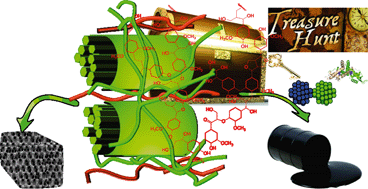Emerging strategies for breaking the 3D amorphous network of lignin
Abstract
Representing a complex polymeric and amorphous structure arising from the enzymatic dehydrogenative polymerization of three phenylpropanoid monomers, namely sinapyl alcohol, coniferyl alcohol and p-coumaryl alcohol, lignin is mainly found as an integral part of the secondary cell walls of lignocellulosic biomass such as plants and some algae. The absence of commercial high-value applications of lignin is mainly due to its heterogeneous molecular structure, which presents formidable challenges for developing depolymerization techniques and adequate structural modifications. Lignin valorization represents an important challenge in biorefinery. In this perspective, emerging trends in lignin valorization to derive chemicals and materials are presented with a major focus on the critical aspects of dehydrogenation/hydrogenolysis, deoxygenation, enzymatic oxidation, and carbonization. In most cases, conversion of suitable lignin model compounds and actual lignin samples are emphasized. A major focus is given to evaluating the nanoscale structure of employed catalysts for dehydrogenation and deoxygenation techniques. Accessing hierarchically porous carbon materials with fiber and particle morphologies via carbonization of lignin is also discussed. By analyzing the current situation in lignin valorization, certain realistic future directions are identified and emphasized.


 Please wait while we load your content...
Please wait while we load your content...